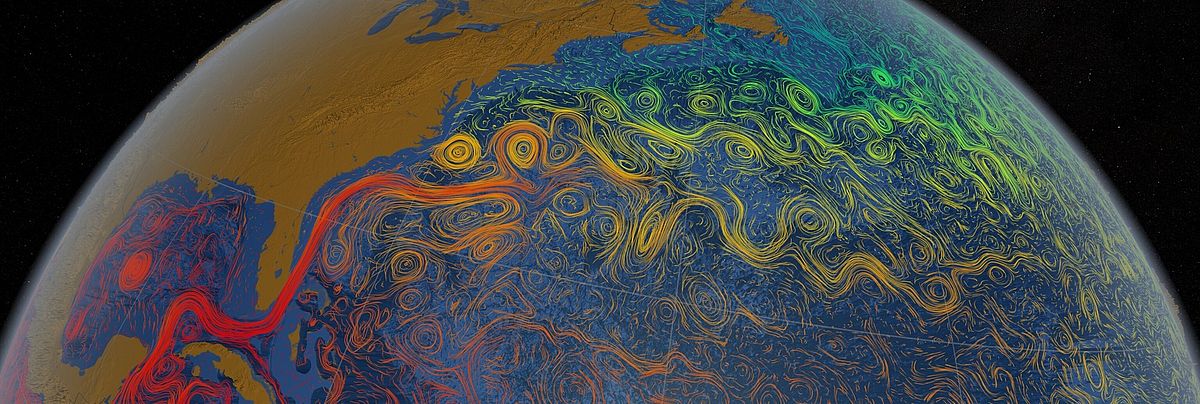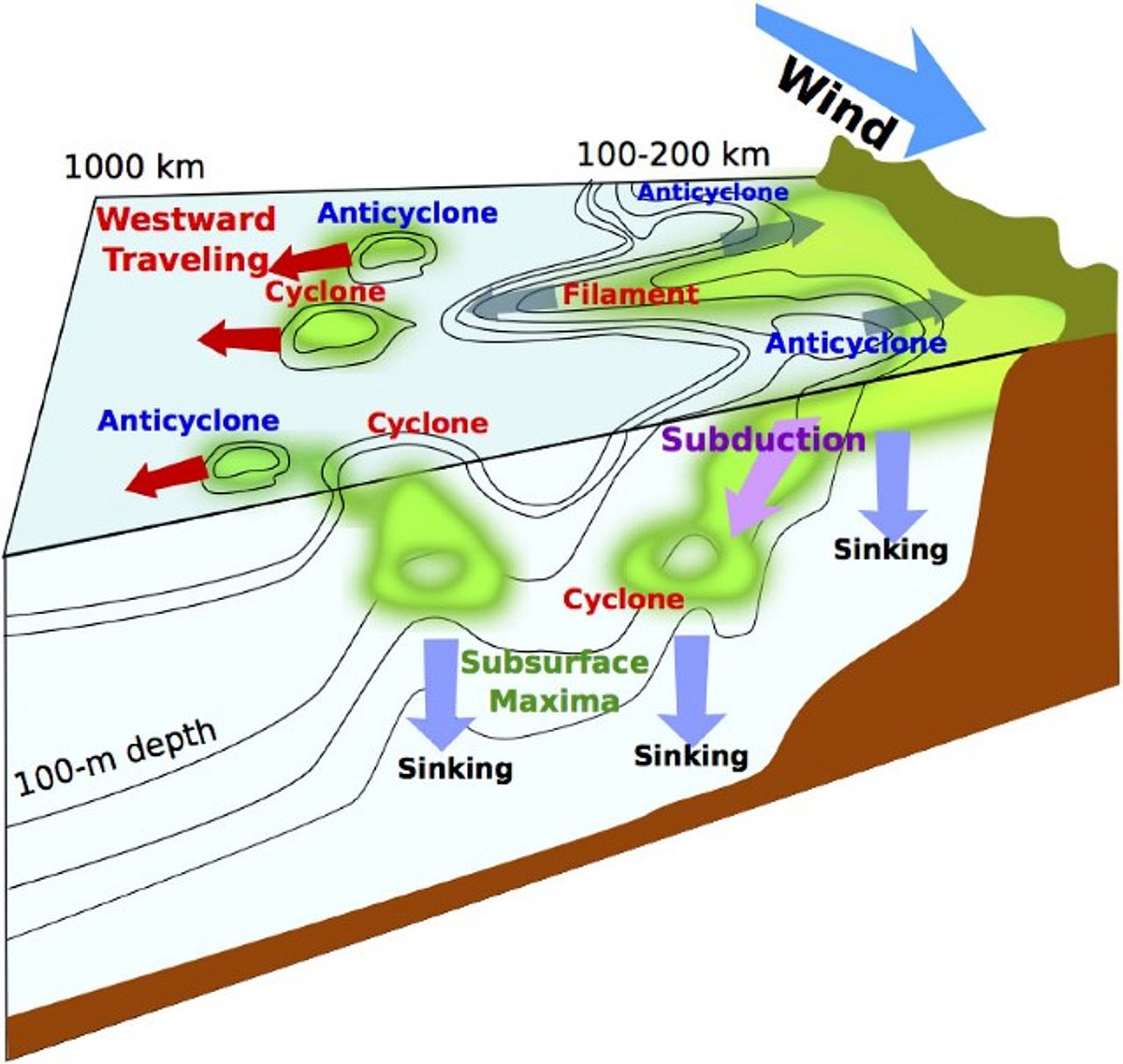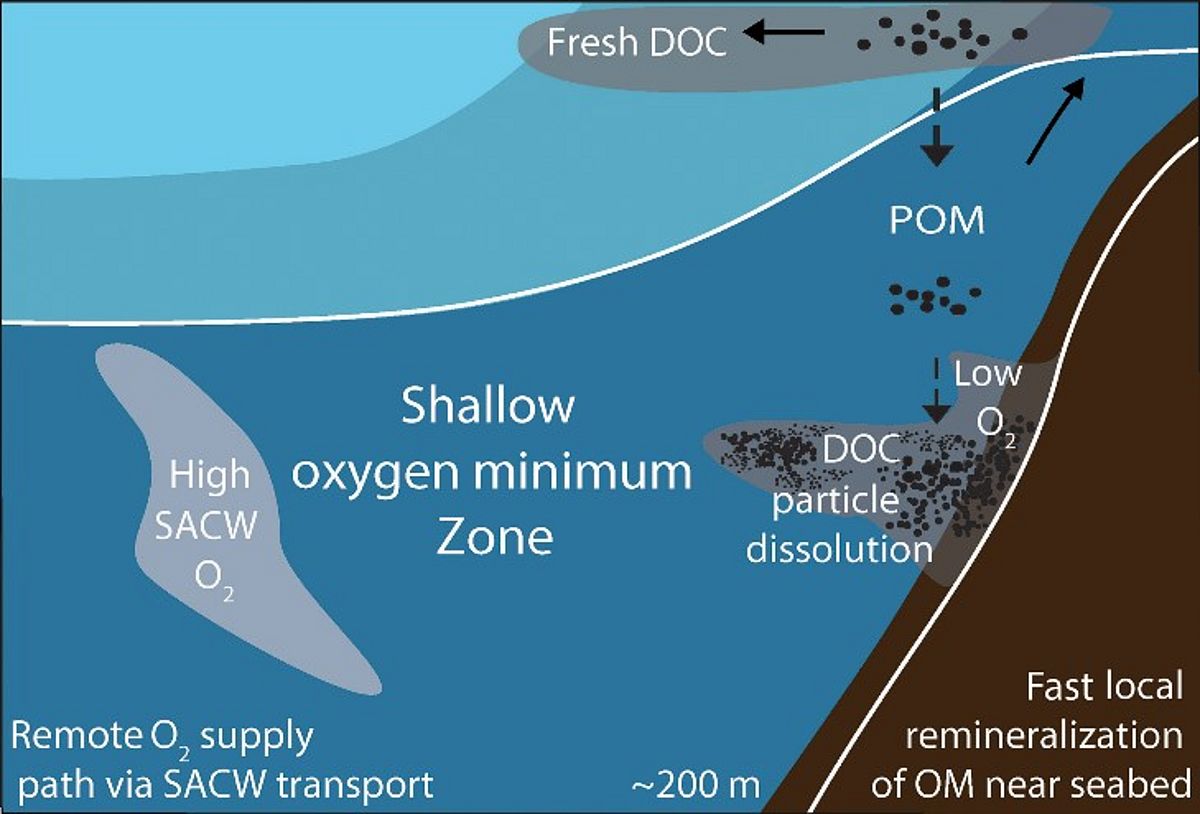Mesoscale Eddies: The “Weather” of the Ocean
From the surface, the ocean might appear uniform and smooth, but just as there are fronts and vortices in the atmosphere - the high and low pressure fields in meteorological maps that determine sunny or rainy weather - there are fronts and vortices in the ocean. These so-called mesoscale eddies are ubiquitous phenomena in coastal regions and at current fronts with horizontal scales on the order of 100 km and timescales on the order of a month. In coastal upwelling systems, mesoscale eddies are formed through the interplay of ocean currents and winds and they significantly affect the physical, biogeochemical and biological properties of the ocean. For example, mesoscale eddies are important vehicles for water mass transport from Eastern Boundary Upwelling Systems, which are some of the most productive marine ecosystems, to the open oligotrophic ocean. These water masses are rich in carbon and nutrients affecting both primary production and export fluxes, which has consequences for the distribution of oxygen through locally variable remineralization processes. Since oxygen concentration is one of the major controls for the distribution of larger pelagic organisms, such as zooplankton as well as meso- and epipelagic fish, mesoscale activities in and around coastal upwelling systems also have socio-economic impacts. It is further hypothesized that climate change will alter the characteristics and statistics of oceanic eddies with probably profound effects on the dynamics and functions of these systems.

With a truly collaborative effort, we investigate the role of mesoscale eddies for the lateral transport of biogeochemical properties and its coupling to the biological carbon pump in the Canary Current System as part of the REEBUS project (Link to project page: https://www.ebus-climate-change.de/reebus). Our particular goals are (1) to determine the influence of mesoscale eddies on upper ocean organic carbon distribution, (2) to understand the influences of eddy dynamics on microbial productivity and organic matter turn-over and (3) to assess the role of EBUS in the lateral supply of organic matter to the central Atlantic Ocean. With our work, we aim at improving the representation of eddies in climate models to gain a more reliable simulation of the global energy cycle and enable more accurate climate forecasts.
To assess the influence of mesoscale eddies on upper ocean organic carbon dynamics, we will determine a variety of geochemical and biological parameters. Organic carbon distributions will be obtained form the spatial distribution as well as the lateral and vertical fluxes of dissolved and non-sinking organic matter, parameters that are rarely considered in current models. Additionally, we will investigate organic carbon turn-over in and around eddies by quantifying microbial process rates including heterotrophic microbial biomass production, primary production, exudation, organic matter degradation and microbial respiration rates. Finally, we will identify organic biomarkers for water mass and carbon transport as well as organic matter production and degradation processes that will help us to reconstruct eddy trajectories and their influence on biogeochemical processes following eddy dissipation. Understanding the chemical composition, microbial cycling and eddy-driven transport of fresh dissolved and non-sinking organic matter in and out of highly productive coastal upwelling systems will result in better estimates of future climate change impacts on oxygen, nutrient and CO2, all of which are important parameters for the future development of Earth’s climate and marine biota.
REEBUS - Role of Eddies in the Carbon Pump of Eastern Boundary Upwelling Systems – Demonstration Case Canary Current System (Link to project page: https://www.ebus-climate-change.de/reebus)
Involved scientists:
Prof. Anja Engel
Dr. Kevin Becker
Quentin Devresse




